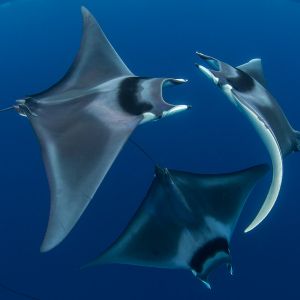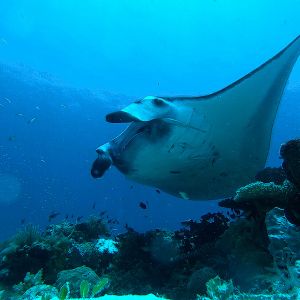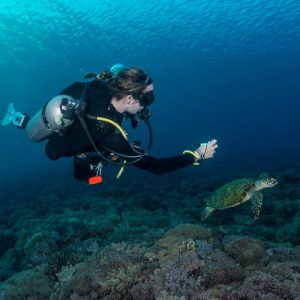In Brief
Conservation Value:
Manta ray cleaning stations are essential habitats for reef manta rays, as they are the “day spas” where rays regularly go to be cleaned by cleaner fish and crustaceans. An oceanic current that runs over the cleaning station enabling rays to hover over the station, giving the cleaners as much time as possible to remove parasites and necrotic material from wounds. Only two such cleaning stations were previously known in the Philippines, both of which received protection. In 2018, a third reef manta ray cleaning station was discovered in Northern Palawan. Despite a ban following the devil ray’s CITES listing in 2017, illegal bycatch and targeted catch continue to impact manta ray populations.
Threats:
Despite a ban following the devil ray’s CITES listing in 2017, illegal bycatch and targetted catch continue, resulting in the destruction of manta ray populations. Manta rays have a long lifespan making them susceptable to overfishing. Recovering these manta ray populations for the benefit of local communities and biodiversity hinges upon identifying and protecting critical habitat.
Economic hardships in the region are recently exacerbated by the pandemic and descruction caused by Typhoon Odette. This has led to a rise in illegal, unreported, and unregulated fishing. Unchecked tourism is set to return to the area as pandemic restrictions ease. High tourism volumes can be damaging to this unprotected habitat, so timely tourism regulations and guidelines for habitat protection is essential.
Actions & Results:
The project lays the groundwork for a new community-led marine protected area and assists in its creation. Actions include:
- Supporting local stakeholders to act upon their own initiatives to protect the cleaning station and its manta rays.
- Training local dive teams with manta ray surveying and monitoring techniques. The collected data is compiled and used to guide conservation efforts.
- Individual manta rays are documented and entered in a national manta ray catalog, which currently lists 107 oceanic and 394 reef manta rays across 22 different sites.
- The project involves regular meetings with local and regional government units.
Goal:
Establish a community-led, science-based marine protected area.
This project is fully funded at present.
(Support is welcome for other projects)
Location:
Northern Palawan, Philippines
Size of Area Involved:
3,200 hectares
Project Field Partner:
The Large Marine Vertebrates Research Institute Philippines (LAMAVE)
Our Investment to Date:
Cost, 2022-2023: CA$27,280
Gallery
Click to enlarge an image
In More Depth...
The Large Marine Vertebrates Research Institute Philippines (LAMAVE) has been involved in large marine vertebrates conservation for over a decade and has published over 35 scientific papers on marine megafauna in the Philippines. Their projects are focused on identifying and studying priority areas for these animals across the Philippines to enhance their conservation through awareness, community engagement, and spatial planning.
The project area is an unprotected marine habitat located in an area of Northern Palawan contested by three separate municipalities - El Nido, Linapacan, and Taytay. The cleaning station is composed of 5 shallow (<15 meters) coral blocks with high densities of cleaner wrasse fish, which are understood to facilitate cleaner-host interactions with manta rays and other marine visitors.
The project area is fished by local communities as there are no fishery protection regulations in place. One of the main challenges of the project is to shape the perception of the local communities to shift their activities from fishing to sustainable tourism.
The cleaning station also lies within easy access to dozens of dive shops as the nearby El Nido Town tourist area is heavily visited. Despite this, dive tourism to the site remains unregulated and unmanaged. This is due in part to the three separate municipalities laying claim over the area, hindering management and conservation actions.
International Conservation Fund of Canada Copyright © 2009-2025
Registered Canadian charity # 85247 8189 RR0001






